|
Dashamooli contains in equal portions of roots of Bilva (Aegle
marmelos), Shyonak (Oroxylum indicum), Gambhari (Gmelina
arborea), Patla (Stereospermum suaveolens), Agnimanth (Clerodendrum
phlomidis),Shalparni (Desmodium gangeticum), Prishriparni (Uraria
picta), Brihati root (Solanum indicum), Kantakari (Solanum
xanthocarpum) and Gokshur (Tribulus terrestris)
1. Bilva (Aegle marmelos):
Consists of dried stem bark &/or dried root of Aegle
marmelos Corr,
Family Rutaceae
Botanical description:
The Bilva tree is slow-growing of medium size, up to 40 or
50 ft (12-15 m) tall with short trunk, thick, soft, flaking
bark and spreading sometimes spiny branches the lower ones
drooping. Young suckers bear many stiff straight spines. A
clear gummy sap, resembling gum arabic exudes from wounded
branches and hangs down in long strands, becoming gradually
solid. The deciduous, alternate leaves, borne singly or in
2'S or 3'S, are composed of 3 to 5 oval, pointed, shallowly
toothed leaflets, 1 1/2 to 4 in (4-10 cm) long, ¾ to 2 in
(2-5 cm) wide, the terminal one with a long petiole. New
foliage is glossy and pinkish-maroon .Mature leaves emit a
disagreeable odor when bruised. Fragrant flowers, in
clusters of 4 to 7 along the young branchlets, have 4
recurved, fleshy petals, green outside, yellowish inside and
50 or more greenish yellow stamens. The fruit round,
pyriform, oval or oblong, 2 to 8 in (5-20 cm) in diameter
may have a thin, hard, woody shell or a more or less soft
rind, gray-green until the fruit is fully ripe when it turns
yellowish. It is dotted with aromatic minute oil glands.
Inside there is a hard central core and 8 to 20 faintly
defined triangular segments. With thin dark-orange walls
filled with aromatic pale-orange, pasty, sweet, resinous,
more or less astringent, pulp. Embedded in the pulp are 10
to 15 seeds. Flattened-oblong, about 3/8 in (1 cm) long,
bearing woolly hairs and each enclosed in a sac of adhesive,
transparent mucilage that solidifies on drying.
Parts used:
Dried stem bark, dried roots
Major chemical constituents:
Auraptene, Coumarins, Glycosides
2. Shyonak (Oroxylum indicum):
Syonaka consists of dried root of Oroxylum indicum Vent,
Family Bignoniaceae
Botanical description:
Trees small, few branched. Leaves opposite, 2- or
3-pinnately compound; leaflets entire. Inflorescences
racemose, terminal, erect.
Parts used:
Dried roots
Major chemical constituents:
Flavonoids and Tannins
3. Gambhari (Gmelina arborea Roxb):
Consists of dried, mature root and root bark of Gmelina
arborea Roxb, Family Verbenaceae
Botanical description:
Gmelina arborea is an unarmed, moderately sized to large
deciduous tree with a straight trunk. It is wide spreading
with numerous branches forming a large shady crown, attains
a height of 30 m or more and a diameter of up to 4.5 m. Bark
smooth, pale ashy-grey or grey to yellow with black patches
and conspicuous corky circular lenticels. Inside surface of
bark rapidly turns brown on exposure and exfoliates into
thick woody plates or scurfy flakes. Blaze pale orange and
mottled with a darker orange colour
Parts used:
Dried roots
Major chemical constituents:
Alkaloids and lignans (arboreal, isoarboreal and related
lignans)
4. Patala(Stereospermum suaveolens):
Consists of dried root of Stereospermum suaveolens DC,
Family Bignoniaceae
Botanical description:
Trees deciduous. Leaves 1-pinnately compound,
opposite; leaflets entire, elliptic or elliptic-lanceolate.
Inflorescences cymose-paniculate, terminal.Calyx campanulate
, 5-dentate, sometimes unequal. Corolla lobes sub equal,
rounded or lacerate, tube small, yellow or pale red. Stamens
4, didynamous, included; anthers divergent. Disc cushionlike.
Ovary sessile; ovules numerous in 1 to several rows .
Capsule dehiscing loculicidally, terete slender, 4-angular;
septumterete, woody. Seeds inserted in septum, transparent
and membranous winged at both ends.
Parts used:
Dried roots
Major chemical constituents:
Bitter Substances, Sterols, Glycosides and Glyco-Alkaloids
5. Agnimanth(Clerodendrum phlomidis):
Consists of dried mature roots of Clerodendrum phlomidis
Linn, Family Verbenaceae
Botanical description:
It is a large shrub or small tree reaching up to 9 m in
height, with more or less pubescent branches. Drug pieces of
Clerodendrum phlomidis Linn are 7-15 cm long, 0.2-0.3 cm
thick, occasionally branched, cylindrical, tough,
yellowish-brown externally, bark thin, occasionally easily
peeled, outer surface rough due to exfoliation, wood light
yellow, fracture hard; taste, slightly astringent.
Parts used:
Dried roots
Major chemical constituents:
Sterols
6. Shalparni (Desmodium gangeticum):
Consists of dried root of Desmodium gangeticum DC, Family
Fabaceae
Botanical description:
Desmodium gangeticum is a nearly erect under shrub, 0.6-1.2
m high. Tap root, poorly developed, but lateral roots 15-30
cm long, and 0.1-0.8 cm thick, uniformly cylindrical with a
number of branches; surface smooth bearing a number of
transverse, light brown lenticels, bacterial nodules
frequently present; light yellow; fracture fibrous; odor not
characteristic; taste, sweetish and mucilaginous.
Parts used:
Dried roots
Major chemical constituents:
Alkaloids
7. Prishriparni (Uraria picta):
Consists of dried whole plant of Uraria picta Desv, Family
Fabaceae
Botanical description:
Occur in pieces of varying size, thickness of 1 to 2 cm,
gradually tapering, tough, woody, and cylindrical;
externally light yellow to buff, internally pale yellow;
surface bearing fine longitudinal striations; fracture,
splintery or fibrous; taste, slightly acrid.
Parts used:
Dried roots
Major chemical constituents:
Flavones, isoflavones, triterpenes and steroids
8. Brihati (Solanum indicum):
Consists of dried root of Solanum indicum Linn, Family
Solanaceae
Botanical description:
It is much branched, very prickly under shrub, 0.3-1.8 m in
height. Leaves are simple, large, ovate, subentire, sinuate
or lobed. Flowers are blue in extra-axillary cymes having
stellately hairy and prickly peduncles. Fruits are globose
berries, reddish or dark yellow with smooth or minutely
pitted seeds. Root well developed, long, ribbed, woody,
cylindrical, pale yellowish-brown,1-2.5 cm in dia., a number
of secondary roots and their branches present, surface rough
due to presence of longitudinal striations and root scars,
fracture, short and splintery; no distinct odour and taste.
Parts used:
Dried roots
Major chemical constituents:
Steroidal Alkaloids and Steroids
9. Kantakari (Solanum xanthocarpum):
Consists of mature, dried whole plant of Solanum surattense
Burm. f., (Synonym Solanum xanthocarpum Schrad. & Wendl),
Family Solanaceae
Botanical description:
Annual herb, erect, 25-100 cm high, pubescent with simple
hair. Stems are often angular, sparsely-pubescent. The
blades of the leaves are ovate, the bases are cuneate, 4-10
and 3-7 cm wide, pubescent, entire or coarsely dentate, the
apex is obtuse. Inflorescences are extra-axillary umbels,
the calyx cup-shaped, the corolla is white, 8-10 mm long ,
the lobes ovate-oblong, pubescent abaxially, ciliate
spreading. Filaments are 1-1.5 mm long, anthers oblong,
2.5-3.5 mm. Fruiting pedicels are strongly deflexed. The
fruiting calyx is applied to the berry. The fruits are dull
black, globose, 8-10 mm in diameter.
Parts used:
Dried roots
Major chemical constituents:
Glucoalkaloids and sterols
10. Gokshura (Tribulus terrestris):
Consists of root of Tribulus terrestris Linn, Family
Zygophyllacease
Botanical description:
Tribulus terrestris is an annual prostrate herb. Roots are
star-shaped, consisting of 5 capsules of the pericarp, and
6~10 mm in diameter. Sometimes pericarps are separated. The
outer surface is grayish green~grayish brown. The capsule is
protuberant on the dorsal side with two thorns. The thorn is
3~7 mm long of large thorns and 2~5 mm long of short ones.
Many bulges are on the ridge-line. The texture is hard. The
cross-section is white ~ yellowish white and oleaceous. It
is odourless, and tastes bitter.
Parts used:
Dried roots
Major chemical constituents:
Alkaloids and saponins
Therapeutic uses of Dashmooli:
• Intercostal neuralgia and pleurodynia (Parsva sula)
• Fever (Jvara)
• Asthma (Svasa)
• Cough due to kapha dosa (Kaphaja kasa)
• Bronchitis (Kasa)
• Headache (Sirah Pida)
• Oedema (Sotha)
• Tymphanitis (Anaha)
• Anorexia (Aruci)
• Aggrevated vayu, pitta and kapha (Dosa traya)
• Convulsion (Apatantraka) |
|
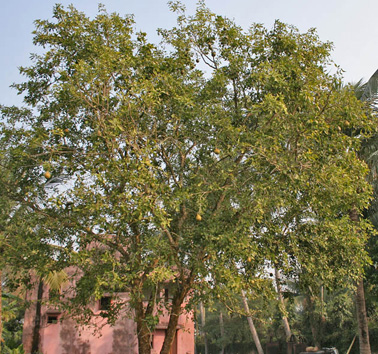
Bilva
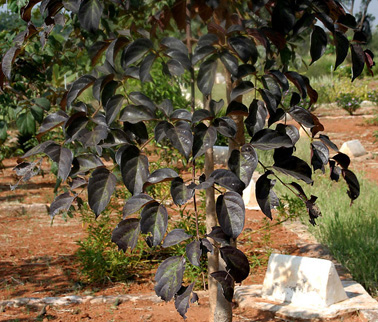
Shyonak
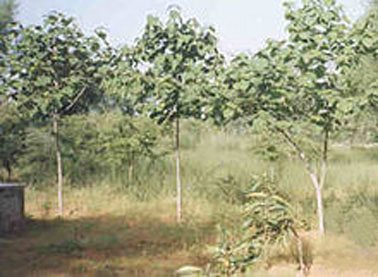
Gambhari
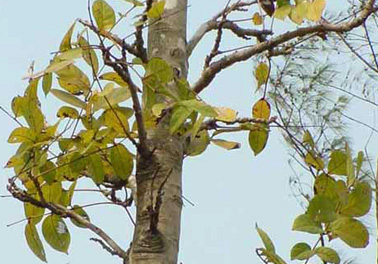
Patala
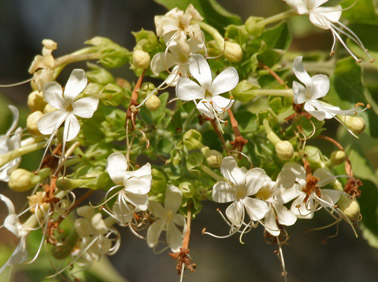
Agnimanth
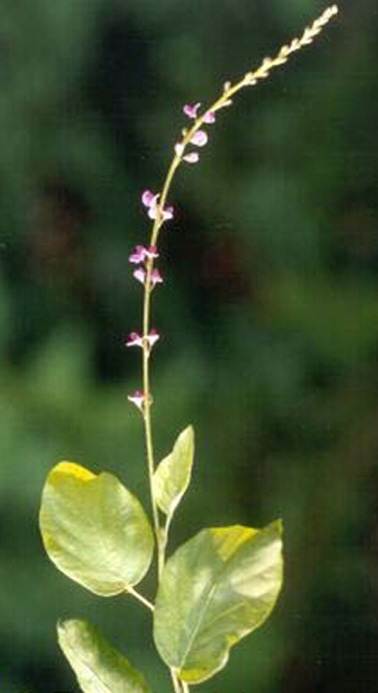
Shalparni
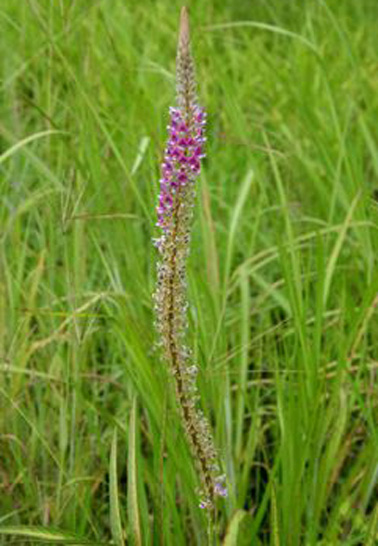
Prishriparni
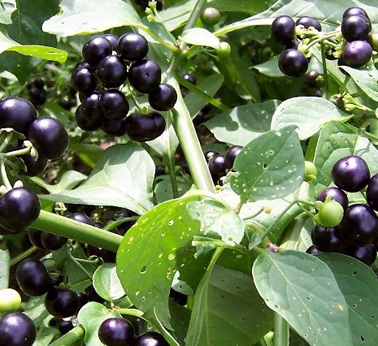
Brihati
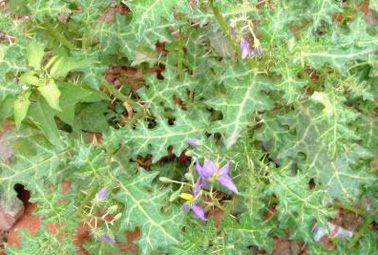
Kantakari
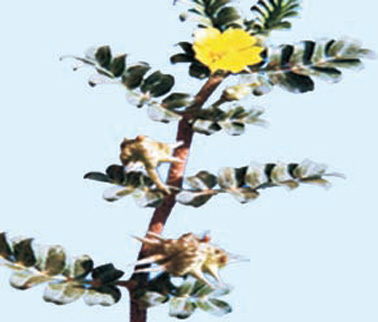
Gokshura |
|



